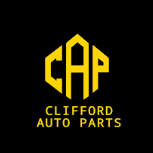-
Welcome to Auto Parts Forum
Whether you are a veteran automotive parts guru or just someone looking for some quick auto parts advice, register today and start a new topic in our forum. Registration is free and you can even sign up with social network platforms such as Facebook, X, and LinkedIn.
Catalytic Converter Replacement Rules
-
Similar Topics
-
By Dorman Products
Programming instructions | Dorman replacement keyless entry transmitter fobs for GM vehicles
-
By Clifford Auto Parts
Your car’s control module is one of the most important components in ensuring a smooth and efficient ride. Whether it’s an Engine Control Module (ECM), Powertrain Control Module (PCM), or Transmission Control Module (TCM), these electronic units play a crucial role in regulating engine performance, fuel efficiency, and transmission behavior.
At Clifford Auto Parts, we specialize in providing OEM control modules that guarantee compatibility, reliability, and long-term performance. But how do you know when it’s time to replace your control module? Let’s break it down!
✅ What Is a Control Module and What Does It Do?
A control module is an onboard computer that processes data from various sensors in your car and makes real-time adjustments to optimize performance. Some of the most common control modules include:
✔️ Engine Control Module (ECM) – Controls ignition timing, fuel injection, and emissions.
✔️ Powertrain Control Module (PCM) – Manages both engine and transmission functions.
✔️ Transmission Control Module (TCM) – Regulates gear shifting and transmission efficiency.
✔️ Body Control Module (BCM) – Handles electrical functions such as lighting, locks, and windows.
When these modules start to fail, your car may experience serious performance issues that could lead to costly repairs.
✅ Signs of a Failing Control Module
If your control module is going bad, your car will usually give you warning signs. Here are the top indicators that it may be time for a replacement:
🚨 Check Engine Light Stays On
If your Check Engine Light won’t turn off even after repairs, it could be due to a failing ECM or PCM.
🚨 Poor Fuel Efficiency
A malfunctioning control module may send incorrect signals, leading to excess fuel consumption and reduced mileage.
🚨 Difficulty Starting the Car
If your car struggles to start, the ECM might not be properly managing the fuel and ignition system.
🚨 Transmission Issues
A faulty PCM or TCM can cause hard shifting, gear slipping, or delayed acceleration.
🚨 Engine Stalling or Misfiring
A failing ECM can result in irregular combustion cycles, leading to stalling, misfires, and sluggish performance.
🚨 Electrical Malfunctions
The BCM controls many electronic functions, so if your power windows, locks, or headlights start acting up, it may be time for a replacement.
✅ What Causes Control Modules to Fail?
Several factors can lead to a control module failure, including:
🔥 Water or Moisture Damage – Exposure to moisture can corrode internal circuits.
⚡ Voltage Surges – A faulty alternator or battery can overload the control module.
🔧 Worn-Out Components – Over time, electronic components degrade, leading to failure.
💥 Physical Damage – Accidents or engine overheating can cause module failure.
If you’re experiencing any of these issues, replacing your control module can prevent further damage and restore your vehicle’s performance.
✅ Why Choose an OEM Control Module Over Aftermarket?
When replacing a control module, you have two options: OEM (Original Equipment Manufacturer) or Aftermarket. Here’s why OEM control modules are the best choice:
✔️ Guaranteed Compatibility – Designed specifically for your vehicle’s make and model.
✔️ Pre-Programmed for Plug-and-Play Use – No extra programming needed.
✔️ Factory-Tested for Reliability – OEM parts undergo rigorous quality checks.
✔️ Maintains Vehicle Warranty – Aftermarket parts may void manufacturer warranties.
✔️ Longer Lifespan – OEM modules are built to last, unlike some aftermarket options.
✅ Why Buy OEM Control Modules from Clifford Auto Parts?
At Clifford Auto Parts, we provide high-quality OEM control modules at unbeatable prices. Here’s why thousands of vehicle owners trust us:
✔️ OEM-Grade Control Modules for Ford, Dodge, Jeep, and More
✔️ Pre-Programmed & Ready to Install – No Dealership Required
✔️ Lifetime Warranty on ECM, PCM, and TCM Replacements
✔️ Fast & Free Nationwide Shipping – Receive Your Part in 3 Business Days
✔️ Expert Customer Support to Help You Find the Right Module
🚗 Looking for a replacement control module? Shop now at link hidden, please login to view and get back on the road with confidence!
✅ How to Install Your New Control Module
1️⃣ Disconnect the Battery – Prevents electrical damage.
2️⃣ Locate the Module – Found under the hood, near the firewall, or in the cabin.
3️⃣ Remove the Old Module – Carefully disconnect all wiring and mounting bolts.
4️⃣ Install the New OEM Module – Secure it and reconnect wiring.
5️⃣ Test Your Vehicle – Start your car and check for warning lights or error codes.
📌 Need help finding the right part? Call (516) 494-7838 for expert assistance!
✅ Final Thoughts: Get the Right Control Module for Your Car
A failing control module can cause engine trouble, transmission problems, and electrical failures—but replacing it with an OEM module ensures long-term reliability, compatibility, and optimal performance.
🔧 Don’t let a bad control module ruin your driving experience! Get a high-quality replacement today at link hidden, please login to view 🔧
📞 Have questions? Call (516) 494-7838 for expert support.
🚀 Fast Shipping – Lifetime Warranty – 100% Customer Satisfaction! 🚀
-
-
By Clifford Auto Parts
Have you ever been left scratching your head over why your car is stalling unexpectedly, guzzling fuel, or struggling to start? The culprit could be your Engine Control Module (ECM)—the brain of your vehicle’s engine. ECMs play a vital role in controlling essential engine functions, including fuel injection, ignition timing, and emission systems. When this critical component malfunctions, it can lead to significant performance issues or even a complete breakdown.
Common Signs of ECM Failure:
Sudden or repeated stalling while driving Reduced fuel efficiency Check Engine light illuminated with no clear cause Difficulty starting or keeping the engine running What to Do When Your ECM Fails Replacing a faulty ECM doesn’t have to be a daunting task. Start by identifying the exact make, model, and engine specifications of your vehicle to ensure compatibility with a replacement ECM. Using an incompatible unit can lead to further issues, including miscommunication between the ECM and your car’s systems.
Why Quality Matters in ECM Replacements A high-quality ECM replacement can restore your vehicle’s performance and prevent recurring issues. Here are some features to look for in a replacement part:
Rigorous Testing: Choose an ECM that has been tested to meet or exceed OEM standards. Lifetime Warranty: A warranty provides peace of mind and indicates confidence in the product. Fast Shipping: Getting your ECM quickly reduces vehicle downtime. Where to Find Reliable ECMs When searching for a replacement ECM, you want a supplier who offers reliability, competitive pricing, and excellent customer support. Many suppliers claim to provide the best parts, but finding one with a proven track record can make all the difference.
One resource to explore is
link hidden, please login to view, which specializes in high-quality ECMs for a wide range of vehicles. They offer fast shipping, free delivery, and a lifetime warranty on their products—features that can save you both time and money. Join the Discussion Have you experienced ECM issues in your vehicle? How did you identify the problem, and what steps did you take to resolve it? Share your story or ask questions in the thread—let's exchange tips and advice to keep our vehicles running smoothly.
-




Recommended Posts
Join the conversation
You can post now and register later. If you have an account, sign in now to post with your account.
Note: Your post will require moderator approval before it will be visible.